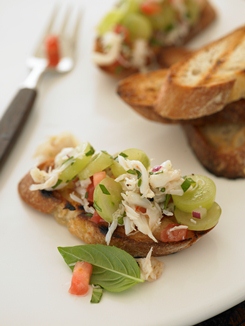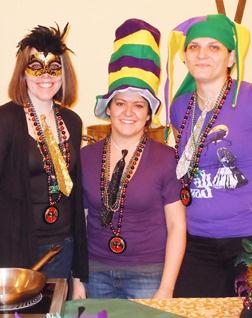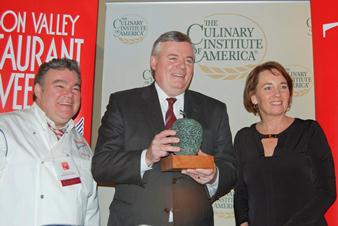Green Tomato: Sustainable Culinary Arts
 A combination high school, urban farm and environmental education center in Connecticut is leading the way as a model in healthy lifestyles for students from all socioeconomic backgrounds.
A combination high school, urban farm and environmental education center in Connecticut is leading the way as a model in healthy lifestyles for students from all socioeconomic backgrounds.
By Morgan Wotherspoon
For decades now, the idea of sustainable agriculture has been gaining momentum. Our country is looking for better ways to grow our food and eat healthy. Sustainable agriculture is a method of growing and raising food that is healthy for consumers and animals, is more in tune with the environment, humane for workers, respects animals, provides a fair wage to the farmer, and supports and enhances rural communities. (Visit www.sustainabletable.org for more.)
Common Ground High School, Urban Farm and Environmental Education Center are taking this concept to the next level. This charter school in New Haven, Conn., is integrating sustainable farming, culinary arts and its school-lunch program. It’s a unique model for the future of high-school culinary-arts programs.

 An e-learning module focusing on the versatility, nutrition and palate-pleasing power of California table grapes.
An e-learning module focusing on the versatility, nutrition and palate-pleasing power of California table grapes. A team of Anne Arundel Community College culinary-arts students swept the competition at the 13th Annual Gumbo Fest in Annapolis. Team Anne Arundel won first place in both categories—the Judge’s Choice and People’s Choice—at the Feb. 26 competition at the Double Tree Hotel in Annapolis. Eleven other teams from area restaurants also competed in this year’s Gumbo Fest.
A team of Anne Arundel Community College culinary-arts students swept the competition at the 13th Annual Gumbo Fest in Annapolis. Team Anne Arundel won first place in both categories—the Judge’s Choice and People’s Choice—at the Feb. 26 competition at the Double Tree Hotel in Annapolis. Eleven other teams from area restaurants also competed in this year’s Gumbo Fest. Dr. Tim Ryan, CMC, president of The Culinary Institute of America (CIA), is the recipient of The Valley Table magazine’s first Farm-to-Table Award recognizing leadership in the support of regional agriculture. The award was presented to Ryan at the Hudson Valley Restaurant Week launch event at the college on February 28, 2012.
Dr. Tim Ryan, CMC, president of The Culinary Institute of America (CIA), is the recipient of The Valley Table magazine’s first Farm-to-Table Award recognizing leadership in the support of regional agriculture. The award was presented to Ryan at the Hudson Valley Restaurant Week launch event at the college on February 28, 2012. Do you want to teach your staff or students about a specific area of the professional kitchen? Are you looking for a comprehensive yet concise resource? If so, the American Culinary Federation’s (ACF) latest series, National Apprenticeship Training Program for Cooks, and its accompanying CD-ROM resources, is for you. Compiled and published by American Technical Publishers (ATP), the 10 modules are available for $25 each, with a 25% discount for purchases of five or more. A compiled textbook, containing content from each of the modules, is also available for $80.
Do you want to teach your staff or students about a specific area of the professional kitchen? Are you looking for a comprehensive yet concise resource? If so, the American Culinary Federation’s (ACF) latest series, National Apprenticeship Training Program for Cooks, and its accompanying CD-ROM resources, is for you. Compiled and published by American Technical Publishers (ATP), the 10 modules are available for $25 each, with a 25% discount for purchases of five or more. A compiled textbook, containing content from each of the modules, is also available for $80. The recent Farming for the Future Conference promoted new ideas and learning to the benefit of all.
The recent Farming for the Future Conference promoted new ideas and learning to the benefit of all.
 Current and emerging trends as revealed at the 20th-annual Catersource Conference & Tradeshow in Las Vegas last month.
Current and emerging trends as revealed at the 20th-annual Catersource Conference & Tradeshow in Las Vegas last month.